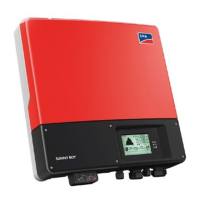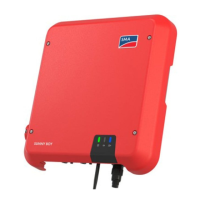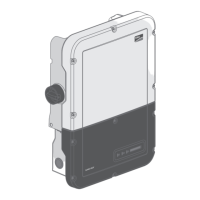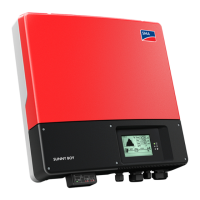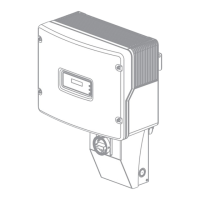What to do if earth current exceeds limit on SMA Inverter?
- JJacqueline ChavezJul 31, 2025
If the earth current between PV+ and GND has exceeded the maximum limit on your SMA Inverter, check the PV array for ground faults.
What to do if earth current exceeds limit on SMA Inverter?
If the earth current between PV+ and GND has exceeded the maximum limit on your SMA Inverter, check the PV array for ground faults.
What to do if the GFDI-Fuse is open or cleared in SMA Inverter?
If the GFDI-Fuse is open or cleared on your SMA Inverter, check the PV array for ground faults before replacing the fuse.
What to check when High transformer temperature is gone in SMA Sunny Boy 3000US?
If high transformer temperature is gone, verify that the fans are operating normally and that the intake screens are clean. Check the intake vents for debris. Verify that there is adequate ventilation around the inverter.
What happens if DC input voltage is too high on SMA Sunny Boy 3000US Inverter?
If the DC input voltage is above the maximum allowable limit on your SMA Inverter, disconnect DC immediately!
What happens when the transformer temperature is too high in SMA Inverter?
If your SMA Inverter has a high transformer temperature, the inverter will remain stopped until the transformer has cooled.
What does transition failure during data EEPROM mean for SMA Inverter?
A transition failure during reading or writing of data EEPROM on your SMA Inverter does not affect performance.
Critical safety information that must be followed for installation and operation.
Defines symbols used to indicate important safety information and hazards.
Provides warnings related to equipment and personnel safety during installation and operation.
Explains additional symbols used to convey supplementary information for optimal operation.
Outlines the warranty coverage for Sunny Boy inverters sold in the USA.
Explains the Sunny Boy's function as a DC to AC grid-tied inverter for PV systems.
Details anti-islanding protection, ground fault detection, and interconnection code compliance.
Provides a high-level overview of the installation process and its constituent tasks.
Lists all components included in the Sunny Boy package and accessories.
Offers guidelines and cautions for selecting an optimal and safe mounting spot.
Specifies the physical dimensions and required clearances around the inverter for proper operation.
Details step-by-step instructions for physically mounting the inverter and its bracket.
Provides instructions for attaching the optional SMA DC-Disconnect unit.
Explains how to securely attach the Sunny Boy inverter to the wall mounting bracket.
Instructions on how to safely open the inverter enclosure for configuration.
Identifies key internal parts of the Sunny Boy inverter.
Explains how the inverter automatically detects and configures to grid voltage.
Details how to set jumpers for different grid types and configurations.
Covers connection sequence, opening/closing, dimensions, and accessory mounting.
Detailed procedures for connecting the inverter's AC output to the utility grid.
Procedures for connecting the DC input from the PV array to the inverter.
Specifies requirements for DC wiring, including wire gauge and voltage ratings.
Explains how to configure the inverter for negative or positive ground systems.
Information on connecting communication options like RS-485 for monitoring.
Outlines the steps to put the inverter into operation and verify its functionality.
Explains the meaning of the green, red, and yellow LEDs on the inverter.
Details specific LED patterns indicating ground faults or fuse issues.
Describes messages displayed on the inverter's LCD screen during operation and faults.
Instructions for changing the display language on the LCD screen.
Overview of available communication modules and PC applications for monitoring.
Details configurable parameters and their default settings for the inverter.
Provides initial steps and required information for diagnosing and resolving inverter issues.
Lists error codes, their types, and corresponding descriptions for fault diagnosis.
Step-by-step guide for cleaning the inverter's fan and filter.
Methods for verifying the correct operation of the inverter's fan.
Procedures for replacing GFDI fuses within the inverter and string fuses in the DC-Disconnect.
Details FCC compliance statements and user guidelines for interference.
Visual diagrams illustrating wiring configurations with and without the DC-Disconnect.
Lists technical data for Sunny Boy inverters, including voltage, power, and efficiency.
Outlines the voltage and frequency limits and associated trip times for protection.
Specifies torque settings for terminals and recommended wire sizes.
